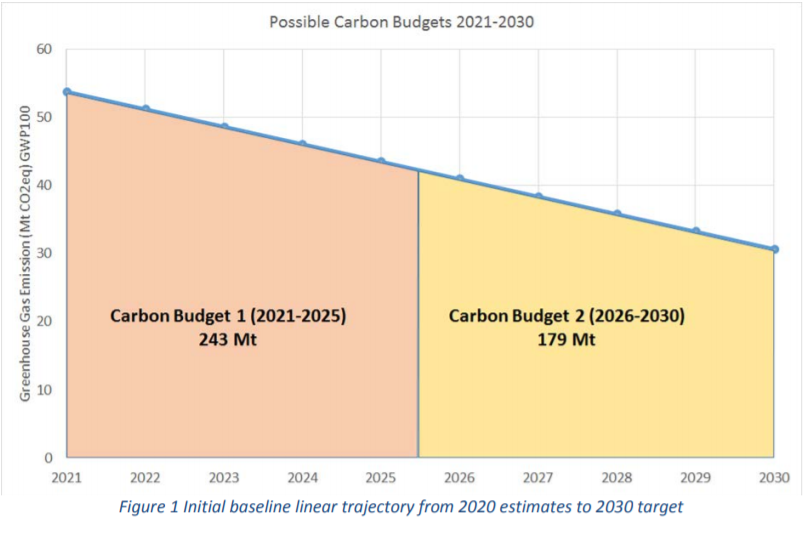
MaREI’s note on Ireland’s first two carbon budgets
Carbon Budgets for Ireland 2021-2030
This note explores choices regarding Ireland’s first two carbon budgets that will be established under the proposed Climate Action and Low Carbon Development (Amendment) Bill 2021. According to the Bill, the carbon budgets will be proposed by the Advisory Council, finalised by the Minister and approved by the Government.
View the note on Carbon budgets 2021-2030 here
Read the original policy statement on Carbon Capture here
The note builds on a previous MaREI discussion paper on the role of carbon budgets in translating the Paris Agreement into national climate-policy1. The note takes account of a number of issues raised in the revised Climate Bill related to carbon budgets, namely
• The first two carbon budgets shall provide for a 51% reduction in GHG emissions by 2030 relative to 2018 levels.
• The role of LULUCF emissions (i.e. whether they are to be included or excluded in the 2018 GHG emissions and the 51% target emissions reduction)
• Ireland’s commitments under the EU 2030 Climate and Energy Framework and the Paris Agreement on Climate Change
• Starting point for 1st carbon budget
• Need to maximise employment and economic competitiveness
Table 1 summarises the widest range of Ireland’s first two carbon budgets based on the illustrative pathways considered in this note.
| Name | Time Period | Range Mt CO2eq |
|---|---|---|
| Carbon Budget 1 | 2021-2025 | 213 – 337 |
| Carbon Budget 2 | 2026-2030 | 159 – 219 |
| Carbon Budget(1+2) | 2021-2030 | 372 – 556 |
Table 1 Indicative Possible Carbon Budgets 2021-2030
The range in possible carbon budgets is large. Over the ten year period, the difference between the highest and lowest options quantified in Table 1 is 184 Mt CO2eq. This represents three times the annual estimated GHG emissions in 2020. The range of options make assumptions regarding possible decisions regarding early action and delayed action, whether LULUCF GHG emissions are included or excluded and different options regarding the starting point. Reconciling the competing criteria underpinning the choice for early of delayed action may be the most difficult task carbon budgets, unless the Council can propose a range of carbon budgets. The range of options presented do not cover all possible options, but rather present a number of indicative plausible choices that reflect the different considerations that might impact the final decision.
In addition, the options here do not take account of sectoral allocations of these possible choices for carbon budgets or the achievability of any of the options carbon budgets presented.
Figure 1 provides a useful simple starting point for discussion. The pathway here is referred to as the baseline trajectory and is generated by a simple linear trajectory between a starting point based on EPA estimates for GHG emissions in 2020 to an endpoint based on the target to achieve a 51% reduction relative to 2018 levels 2.

View the note on Carbon budgets 2021-2030 here
Read the original policy statement on Carbon Capture here



